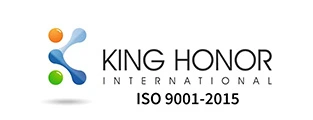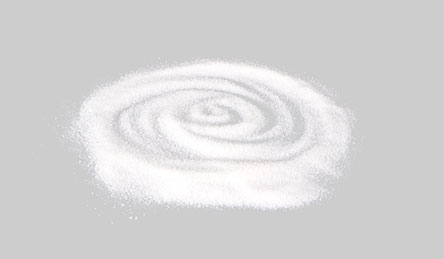
Search


Fischer tropsch wax is mainly used in PVC plastic processing, wax candles, filled mother granules, plastic wood processing, and a small amount is used in the tire rubber industry after recompounding. It has potential for further development in fields such as hot-melt adhesives, inks, coatings, modified asphalt, etc.
Use of fischer tropsch wax in the plastic processing industry
Fischer tropsch wax at 105℃ is mainly used as an external lubricant and stabilizer in PVC processing. Currently, China's PVC production is about 16 million tons, and the amount of fischer tropsch wax added as an external lubricant accounts for 3‰~8‰ of the PVC production, about 100,000 tons.
Due to the toxicity of lead stabilizers and their tendency to volatilize during processing, which is harmful to the human body, manufacturers in China that produce PVC require the mandatory use of calcium-zinc stabilizers to replace lead stabilizers. However, the lubrication effect of calcium-zinc stabilizers is average, and fischer tropsch wax needs to be added to enhance lubricity, increase processing and extrusion efficiency, and significantly improve product surface gloss.
The amount of calcium-zinc stabilizers used in China is about 300,000 tons, and the amount of fischer tropsch wax added accounts for about 20%, or about 60,000 tons. The total demand for 105℃ fischer tropsch wax in the plastic processing industry in China is about 160,000 tons.
Use of fischer tropsch wax in the candle and emulsion wax industries
Fischer tropsch wax at 60℃ is mainly used in candles and emulsion waxes. Apart from its oil content, its other performance indicators are not much different from those of petroleum wax. The oil content of fischer tropsch wax at 60℃ is between 4% and 6%, while that of fully refined paraffin wax at 60℃ is below 0.5%.
China's production of paraffin wax is about 1.2 million tons, of which the amount used in the candle industry is over 300,000 tons. Due to its excessive oil content, fischer tropsch wax at 60℃ is cheaper than paraffin wax.
Due to its price advantage, some candle manufacturers in China have gradually started adding fischer tropsch wax to replace part of the petroleum wax. The maximum amount added currently can reach 30%. If fischer tropsch wax is to reach the quality of paraffin wax, it needs to undergo a solvent dewaxing process. After dewaxing, the cost of fischer tropsch wax will increase, but the product quality can meet the oil content specifications of paraffin wax.
Use of fischer tropsch wax in the plastic wood industry
Plastic wood is mainly produced by mixing waste plant fibers such as wood chips, rice husks, and straw with plastics (recycled waste plastics such as PP, PE, PVC, etc.), and then using extrusion, molding, injection molding, and other processing technologies to produce panels or profiles similar to wood materials.
High-melting-point fischer tropsch wax (105℃) and PE wax are usually added as a fusion aid, and the global output of plastic wood materials is currently about 2 million tons, with China's output at around 500,000 tons. The amount of high-melting-point fischer tropsch wax added is about 2,000 tons.
With the country gradually attaching importance to new environmentally friendly materials, China's plastic wood materials will continue to develop rapidly, and the amount of high-melting-point fischer tropsch wax added is expected to continue to increase.
Use of fischer tropsch wax in the rubber protective wax industry
In China, rubber protective wax is generally formulated by compounding paraffin wax and microcrystalline wax, and it can delay the process of ozone aging of unsaturated rubber. It's widely used in tires and rubber products. In foreign countries, fischer tropsch wax has been applied in the rubber protective wax field, and fischer tropsch wax with very low oil content is usually selected. Different fischer tropsch wax products with different carbon number distributions are selected according to different formulas.
fischer tropsch wax has also begun to enter this field in China, mainly at 70℃, replacing about 20% of paraffin wax and being compounded with microcrystalline wax. Currently, China's rubber protective wax uses about 50,000 tons.
Use of fischer tropsch wax in the hot-melt adhesive industry
Hot-melt adhesives are mainly used in automotive interiors, paper pasting, shoe materials, packaging, and other fields. The performance requirements for hot-melt adhesives in these fields are mainly for improving heat resistance, quick bonding, and fast drying. Adding high-melting-point fischer tropsch wax can improve the performance of hot-melt adhesives.
Fischer tropsch wax used in the ink and paint industry
The addition of fischer tropsch wax in the ink and paint industry mainly improves their wear resistance and wrinkle resistance. fischer tropsch wax is usually made into fine powder or emulsion wax. The ink and paint industry has higher requirements for oil content and carbon number distribution in the wax, and China's 100℃ fischer tropsch wax has almost no application due to its wide carbon number distribution, easy aggregation of low-carbon wax into clusters, poor dispersion, excessive oil content, and large particle size of the fine powder.
King Honor's Fischer-Tropsch wax is a premium-grade product that has gained widespread recognition for its exceptional properties and applications. Derived through the Fischer-Tropsch process from high-quality feedstocks, this wax boasts a unique combination of characteristics that sets it apart in the market. With a well-defined molecular structure and controlled branching, King Honor's Fischer-Tropsch wax exhibits outstanding properties such as high melting points, low viscosity, and remarkable hardness. These features make it an ideal choice for various industries, including rubber and tire manufacturing, as well as in the production of candles, polishes, and coatings.